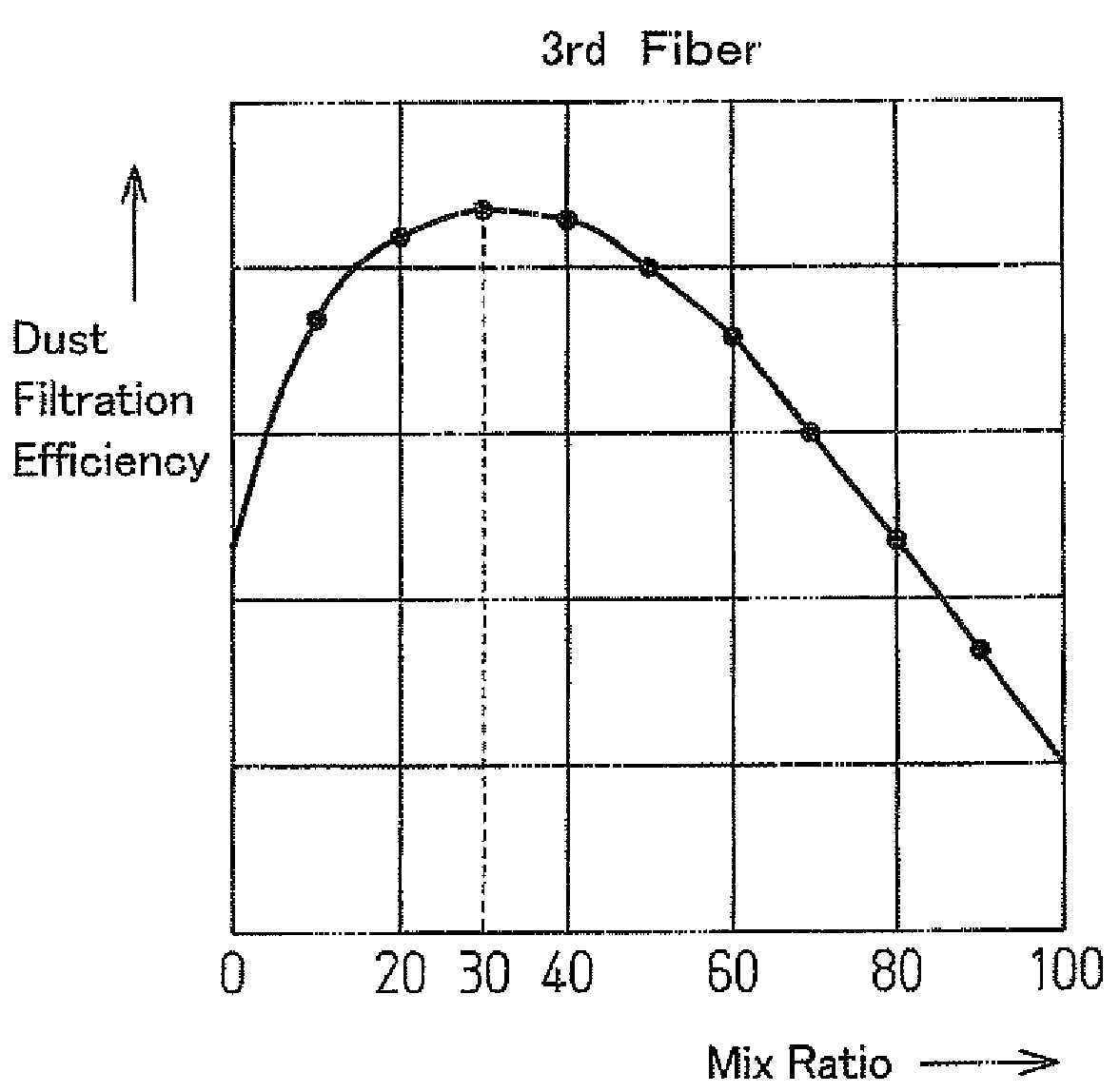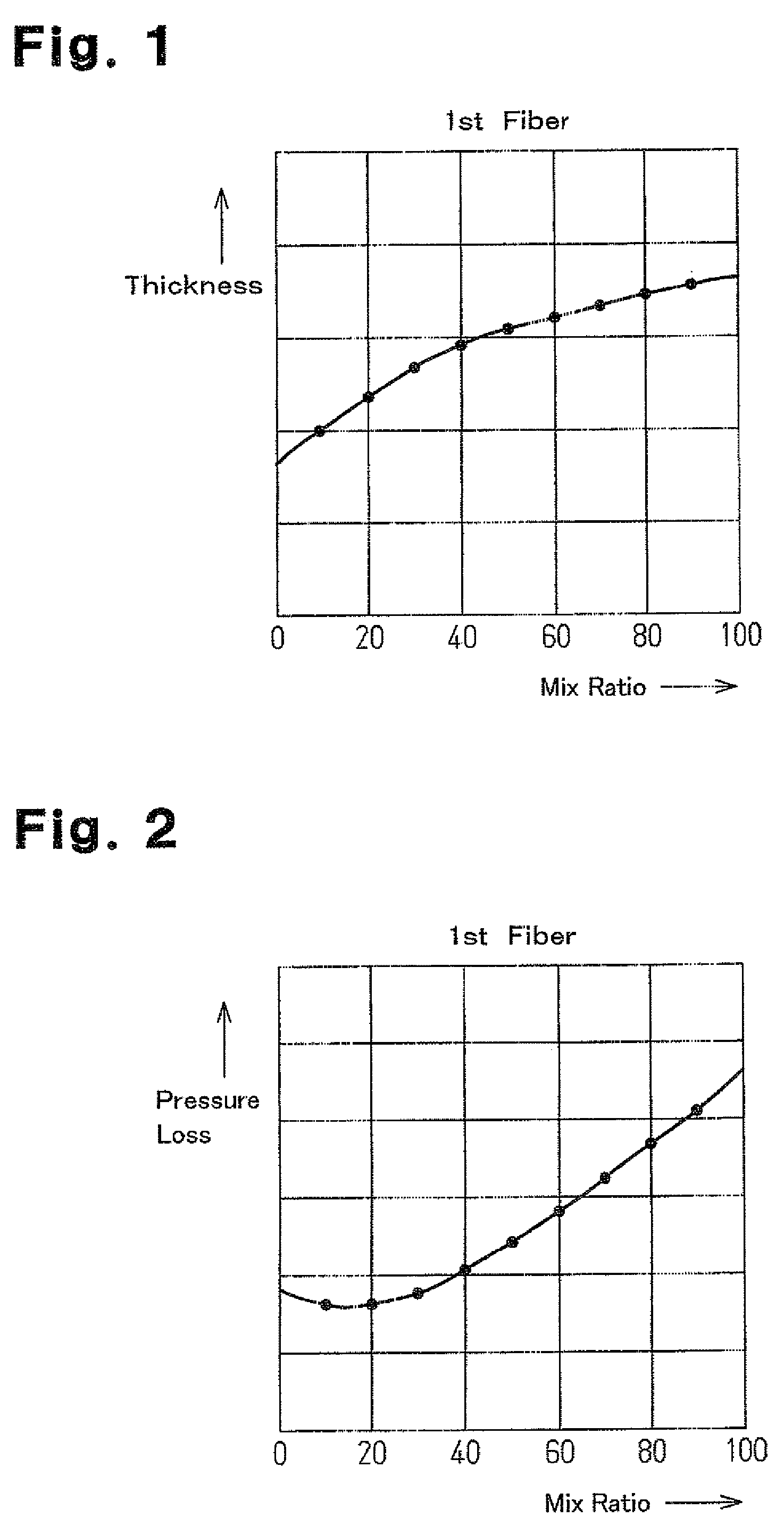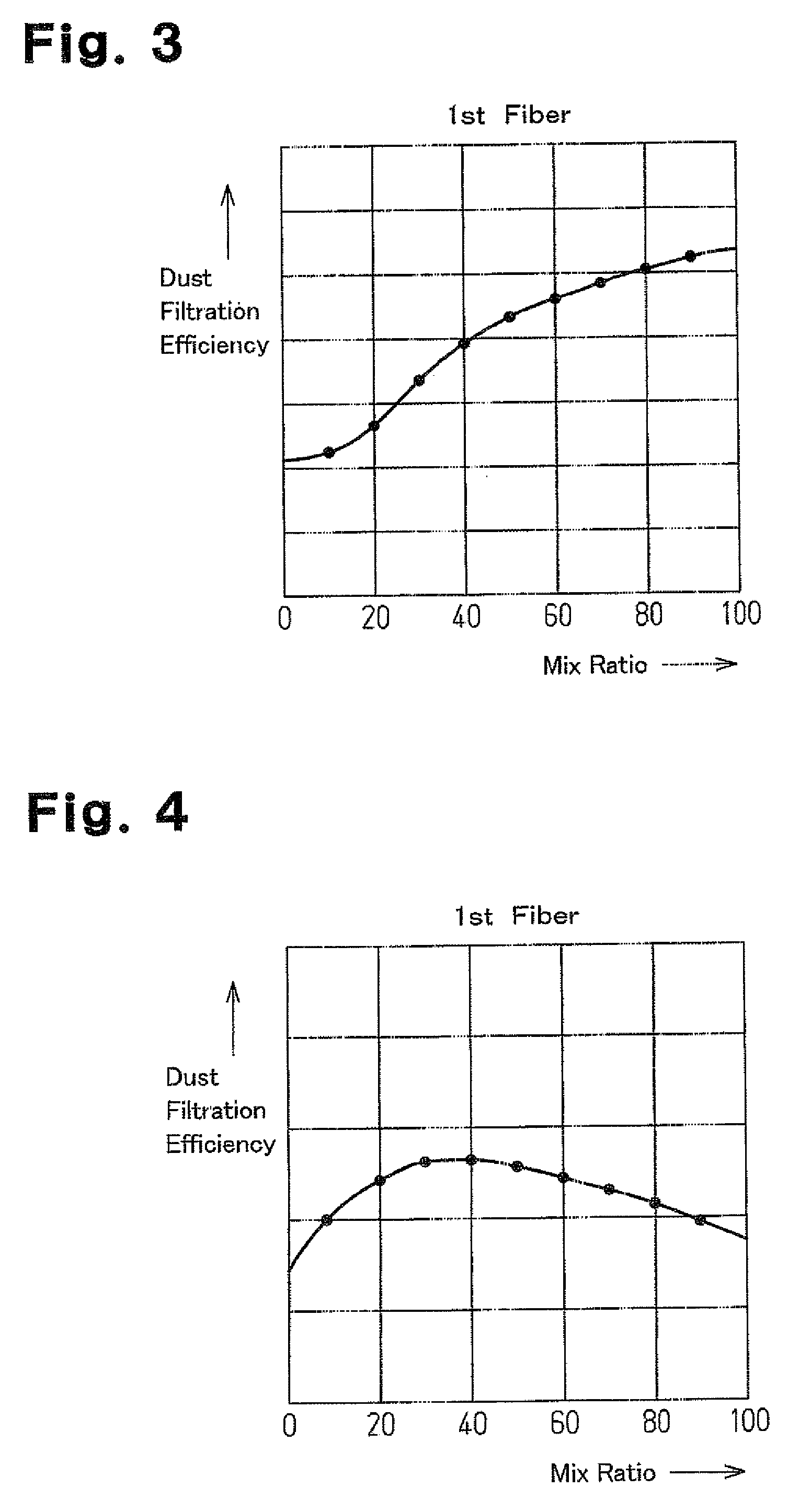Filter material
- Summary
- Abstract
- Description
- Claims
- Application Information
AI Technical Summary
Benefits of technology
Problems solved by technology
Method used
Image
Examples
examples
[0043]Examples of the present invention will now be described in detail.
TABLE 1DustDustMix Ratio (% by mass)Pressureholdingfiltration1st3rdLossamountefficiencyFiber2nd FiberFiber(mm Ag)(g / m2)(%)Example 1Fiber AFiber A 50Fiber C◯◯◯20Fiber B 1020(3.0) (216.19)(99.64)Example 2Fiber AFiber A 50Fiber C◯◯◯15Fiber B 1025(2.5)(195)(99.70)Example 3Fiber AFiber A 50Fiber C◯◯◯25Fiber B 1015(3.6)(195)(99.70)Example 4Fiber AFiber A 50Fiber C◯◯◯10Fiber B 3010(2.1)(190)(99.5) ComparativeFiber AFiber A 40◯◯XExample 150Fiber B 10(2.9)(200)(99.0) ComparativeFiber AFiber A 15Fiber CXΔ◯Example 255Fiber B 1010(7.4)(175)(99.84)Fiber B10ComparativeFiber AFiber A 65Fiber C◯ΔXExample 35Fiber B 255(1.7)(180)(99.2) ComparativeFiber A 50Fiber C◯Δ◯Example 4Fiber B 2030(3.2)(175)(99.5)
TABLE 2Fiber Diameter (μm)Fiber Length (mm)Fiber A: Softwood Pulp30 to 402.1 to 2.2Fiber B: Hardwood Pulp10 to 201.4Fiber C: Polyester65
[0044]As shown in Tables 1 and 2, a filter material of example 1 was formed by mixing 20% by ...
PUM
| Property | Measurement | Unit |
|---|---|---|
| Percent by mass | aaaaa | aaaaa |
| Percent by mass | aaaaa | aaaaa |
| Percent by mass | aaaaa | aaaaa |
Abstract
Description
Claims
Application Information
 Login to View More
Login to View More - R&D
- Intellectual Property
- Life Sciences
- Materials
- Tech Scout
- Unparalleled Data Quality
- Higher Quality Content
- 60% Fewer Hallucinations
Browse by: Latest US Patents, China's latest patents, Technical Efficacy Thesaurus, Application Domain, Technology Topic, Popular Technical Reports.
© 2025 PatSnap. All rights reserved.Legal|Privacy policy|Modern Slavery Act Transparency Statement|Sitemap|About US| Contact US: help@patsnap.com



